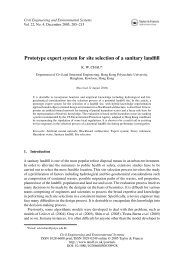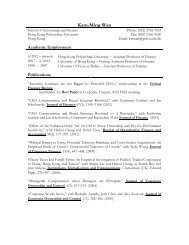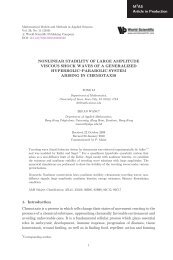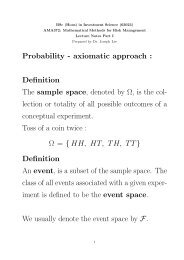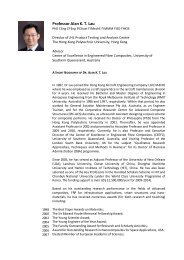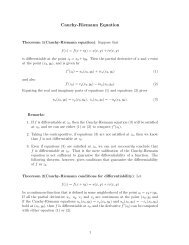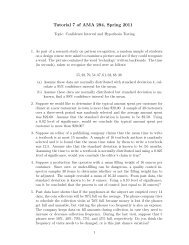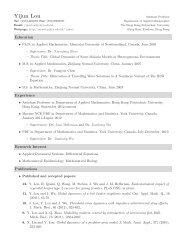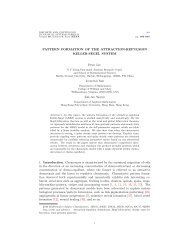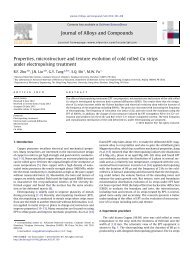DETERMINANTS AND EIGENVALUES 1. Introduction Gauss ...
DETERMINANTS AND EIGENVALUES 1. Introduction Gauss ...
DETERMINANTS AND EIGENVALUES 1. Introduction Gauss ...
Create successful ePaper yourself
Turn your PDF publications into a flip-book with our unique Google optimized e-Paper software.
4. <strong>EIGENVALUES</strong> <strong>AND</strong> EIGENVECTORS FOR n × n MATRICES 97exist. One you may have learned in your calculus course is Newton’s Method.)Unfortunately, an approximate solution of the characteristic equation isn’t muchgood for finding the corresponding eigenvectors. After all, the system(A − λI)v =0must have rank smaller than n for there to be non-zero solutions v. If you replacethe exact value of λ by an approximation, the chances are that the new system willhave rank n. Hence, the textbook method we have described for finding eigenvectorswon’t work. There are in fact many alternative methods for finding eigenvalues andeigenvectors approximately when exact solutions are not available. Whole booksare devoted to such methods. (See Johnson, Riess, and Arnold or Noble and Danielfor some discussion of these matters.)Fortunately, textbook exercises and examination questions almost always involvecharacteristic equations for which exact solutions exist, but it is not always obviouswhat they are. Here is one fact (a consequence of an important result called <strong>Gauss</strong>’sLemma) which helps us find such exact solutions when they exist. Consider anequation of the formλ n + a 1 λ n−1 + ···+a n−1 λ+a n =0where all the coefficients are integers. (The characteristic equation of a matrixalways has leading coefficient 1 or −<strong>1.</strong> In the latter case, just imagine you havemultiplied through by −1 to apply the method.) <strong>Gauss</strong>’s Lemma tells us that if thisequation has any roots which are rational numbers, i.e., quotients of integers, thenany such root is actually an integer, and, moreover, it must divide the constantterm a n . Hence, the first step in solving such an equation should be checking allpossible factors (positive and negative) of the constant term. Once, you know aroot r 1 , you can divide through by λ − r 1 to reduce to a lower degree equation.If you know the method of synthetic division, you will find checking the possibleroots and the polynomial long division much simpler.Example 4. Solveλ 3 − 3λ +2=0.If there are any rational roots, they must be factors of the constant term 2. Hence,we must try 1, −1, 2, −2. Substituting λ = 1 in the equation yields 0, so it is a root.Dividing λ 3 − 3λ +2byλ−1 yieldsλ 3 − 3λ +2=(λ−1)(λ 2 + λ − 2)and this may be factored further to obtainλ 3 − 3λ 2 +2=(λ−1)(λ − 1)(λ +2)=(λ−1) 2 (λ +2).Hence, the roots are λ = 1 which is a double root and λ = −2.Complex Roots. A polynomial equation may end up having complex roots.This can certainly occur for a characteristic equation.



